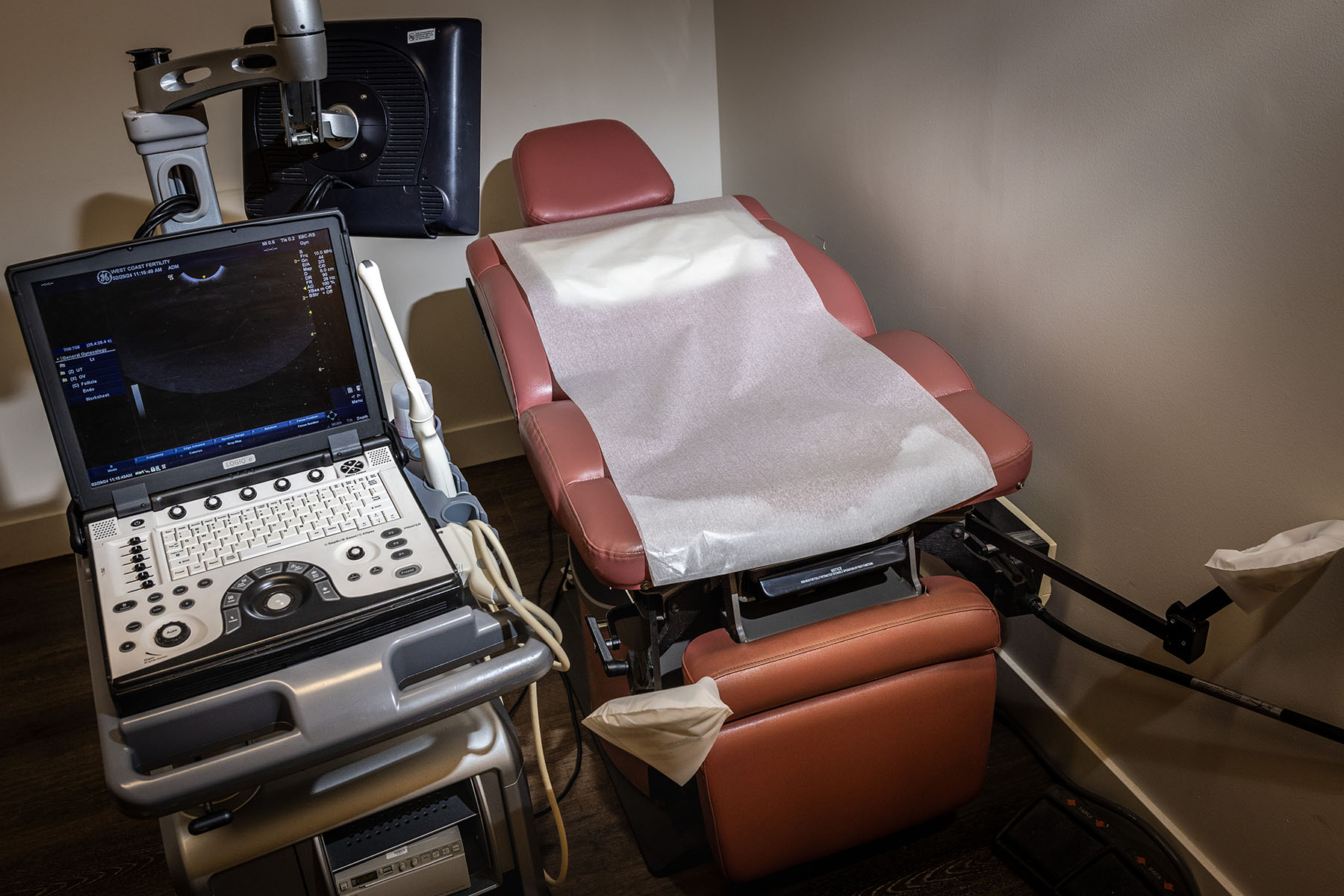Your trusted source for contextualizing abortion news. Sign up for our daily newsletter.
MIAMI — Jennifer knew she couldn’t have a second child. She already has a 10-year-old daughter. They don’t have money to spare.
Her husband works long, unpredictable hours managing a condominium and she recently lost her job. They only have one car, which her husband drives to work; how would she make it to prenatal visits? If she was pregnant, could she find a job that would give her the flexibility to leave early to pick up her daughter after school or go on maternity leave?
So when Jennifer’s period was two days late and her pregnancy test was positive, she and her husband had a conversation. They were a team. They would figure this out together. And once they did, it was obvious for both of them that what their family needed was an abortion.
But it wasn’t until she called a clinic in Miami that Jennifer learned that a law that took effect May 1 in Florida made abortion illegal after six weeks of pregnancy. Jennifer, who asked The 19th to use a pseudonym for her because of the stigma surrounding abortion, suspected that she was four weeks pregnant. Stunned, she made an appointment for the following Wednesday.
Jennifer hung up the phone, thought about it some more and called back. Waiting a few days felt too risky. Could the clinic see her any earlier — even if by a day?
If there was even a chance she had miscounted, and that her pregnancy was past six weeks, Jennifer would be out of options. She didn’t know if abortion was legal later than six weeks in nearby states, but it didn’t matter. She didn’t have the means to travel, or someone to watch her daughter or pick her up from summer camp. Jennifer resigned herself to the fact that if she couldn’t get an abortion in Miami, she would have to carry out her pregnancy.
“I can’t afford to do that,” she said. “It would mean a lot of sacrifices.”
It has been nearly three months since Florida’s six-week abortion ban took effect, so it is still too early to discern how many people have been denied abortions and may have had to carry unplanned pregnancies to term. Data from Georgia and South Carolina, which currently ban abortion at six weeks, and Ohio, which used to until that law was blocked, suggests that such laws cut legal abortion availability roughly in half.
-
Read Next:
Florida voters will have a chance to overturn their law this November through a ballot initiative that would amend the state’s constitution to protect abortion rights. But until then, signs suggest that the state’s six-week ban is layering distinct new challenges onto the patchwork of workarounds that patients and health providers have had to resort to since Roe v. Wade fell in 2022.
Florida is the nation’s third-largest state, one that became an oasis for people affected by abortion bans in the South. Some 84,000 abortions were performed there in 2023, according to state health data. The six-week ban’s impact is likely to be more severe in Miami-Dade County, on the state’s southern tip. That’s where health care providers recorded 17,113 abortions in 2023, about 20 percent of the state total that year — and where the nearest access to legal abortions past six weeks is in Puerto Rico, a three-hour flight away, or North Carolina, a 12-hour drive.
Across the country, almost 200,000 patients traveled outside their home states for abortions in 2023, the first full year after Roe’s fall, according to the Guttmacher Institute. Still more ordered abortion-inducing medication by mail. Physicians in states with shield laws — statutes that protect them from out-of-state prosecution — will prescribe and mail abortion pills to patients in places with bans. The arrangement is medically safe, but legally fraught, especially in states like Florida, which explicitly bans abortion by telemedicine.
Still, nationwide, the number of abortions done by telehealth has skyrocketed since shield laws began to take effect last year; the Society for Family Planning estimates that on average, 8,000 people receive pills each month. These options help explain why the number of abortions in the United States surpassed the 1-million mark in 2023, despite Roe’s fall.
-
Read Next:
But since the six-week limit took effect in Florida, the number of people using telemedicine services, while growing, does not appear to be keeping pace with expected demand, given the state’s population. Neither does the number of people traveling for abortions.
In June, Aid Access, the largest shield-law backed telehealth provider, sent abortion pills to about 270 Florida patients. It’s nearly three times what the organization sent before the ban, but still a fraction of the 2,000 pills it mails every month to Texas, the largest state to ban abortion. The Massachusetts Medication Abortion Access Project (MAP), a smaller telehealth organization, has sent pills to about 60 Florida patients per month since May 1; the organization hopes to increase awareness about telemedicine as an option to increase that number, said Angel Foster, a co-founder of the program.
Meanwhile, new research suggests that nearby states aren’t seeing that many abortion patients arriving from Florida. Researchers from Middlebury College found that wait times for abortions in North Carolina and Virginia initially surged after May 1, but have since subsided. Now, most providers are able to schedule patients within a few days of them calling. That trend suggests that not as many people are traveling to these states as Florida’s population — and number of abortions performed there each year — would suggest, said Caitlin Myers, the Middlebury economist leading the survey.
Myers cautioned, however, that it is too soon to say what that means. Only in time will it become clear whether people are finding other ways of getting abortions, or staying pregnant.
At Planned Parenthood Golden Glades, in the northern part of Miami, clinicians are still caring for patients who make it there within the six-week deadline — people like Jennifer, who, once she arrived, found out that her pregnancy was 5 weeks and 2 days along. She was relieved to learn she could get an abortion. Still, it scared her to imagine what might have happened had she come only a few days later.
“It should be just every woman’s choice. You should be able to do what is right for you,” she said. “Because if not, then you’re forcing people to bring kids into a world that you can’t take care of.”
Patients like Jennifer represent increasingly rare cases, said Chelsea Daniels, a physician at the clinic. Now, the majority of patients coming to her clinic are too far along in their pregnancies to qualify for an abortion under Florida’s strict terms. Staff at a Woman’s Choice in Jacksonville reported a similar experience: They now care for a third as many patients as they used to, said Amber Gavin, a clinic spokesperson, with the rest too late to qualify for an abortion in Florida.
It’s not clear where people whose pregnancies have gone past the legal threshold are going. Since May 1, eight Planned Parenthood clinics across South, East and North Florida have helped about 450 patients find appointments in nearby states like Virginia and North Carolina, but also as far north as New York and New Jersey. About a fifth of those referrals came from two clinics in Miami: Golden Glades and Kendall. Daniels, who flies from Miami twice a month to provide care in Maryland and northern Virginia, has seen patients in those clinics who also traveled from the Miami area.
-
Explore Our Dashboard:
-
Explore Our Dashboard: What abortion looks like in every state — right now
Calla Halle, who runs a clinic in Charlotte, North Carolina, the state’s southernmost abortion provider, said her center has seen an influx in Floridian patients since May 1, but a relatively small one — between 30 and 40 per month. To her, it suggests that many are carrying their pregnancies to term because going out of state is not an option.
“The reality is, people cannot travel like that,” Halle said. “It might be a significant increase for me in terms of how many Florida patients we see. But in the reality of it, 35 or 40 is not a lot out of 84,000,” Florida’s abortion figure from last year.
Florida also requires patients to make two in-person visits to a clinic, separated by at least 24 hours. That narrows the window for an abortion even further. Patients need to detect their pregnancy early enough to make their first clinic visit before they reach 5 weeks and 6 days of pregnancy. But unless someone is testing regularly, they are unlikely to detect a pregnancy until they are more than four weeks into it, at the absolute earliest. It leaves little time to decide whether to get an abortion, let alone make the arrangements — such as time off work, finances and child care. Doctors say that often, patients who make this deadline found out they were pregnant only a day prior.
The burden of who can make that timeline — and if not, who can leave the state — falls disproportionately to women whose primary language isn’t English and who don’t have a driver’s license or a passport. Daniels said that most are already parents and work jobs without paid time off, leaving them little flexibility to travel.
One patient, too late for Florida’s deadline, sat with Daniels mapping out how much time off from work she had accrued to see if she had enough to travel to North Carolina. She barely made it. Another, whose husband didn’t know about her pregnancy and didn’t support abortion, was 5 weeks and 6 days pregnant when she came for her first appointment. If she did not get an abortion the next day, she would be too late. She had no other options, she told Daniels; she could not leave the state. The clinic ended up staying open late the next day to make sure the patient had waited exactly 24 hours after her first visit to have her abortion.
But that is not the norm. Michelle Quesada, a spokeswoman for Planned Parenthood North, South and East Florida, estimated that every week across the affiliate’s eight clinics, about 50 patients show up already past six weeks of pregnancy and leave without an appointment scheduled in another state.
Representatives of the nonprofits that help people pay for the procedure and associated costs say they are hitting a wall. The National Abortion Federation, the nation’s biggest source of abortion assistance funding, cut its budget in half this month, citing reduced donations. The state-level Florida Access Network is not able to support everyone who asks for money — in part because there are so many more people in need and in part because of the hefty expense associated with traveling to North Carolina or Virginia, said Stephanie Lorraine Pińeiro, who runs the fund.
“In the shorter term, there are people who — because of these bans and the funding crisis and lack of knowledge about affordable shield law options — are going to stay pregnant when they don’t want to be,” said Foster, co-founder of the Massachusetts Medication Abortion Access Project, the smaller telehealth organization. “With time, we might see some shifts as more people learn about options for being able to get care sent directly to their homes.”
In the Miami area, a few shops sell misoprostol, one of the two medicines used for an abortion, over the counter and for a few dollars a pill. The option carries medical and legal risks. In the United States, selling misoprostol requires a prescription. Also, doctors say they aren’t sure if it’s actually misoprostol that patients are buying from these stores or whether they know how to take it effectively. Daniels said she has seen patients who say they bought these unauthorized pills and took enough of them to induce an abortion, but were still pregnant.
-
Listen to The Amendment:
-
Listen to The Amendment: The Amendment podcast: The Undoing of Roe with Shefali Luthra
For now, other avenues for abortion do exist, noted Amanda Stevenson, a sociologist at the University of Colorado Boulder who studies how people respond to abortion bans. Some patients may be finding online vendors for misoprostol. Some may be taking extra precautions to avoid pregnancy.
“Some will keep trying and find an abortion,” she said. “Others will keep trying and not find an abortion. And others will not have the resources to keep trying at all, and others will be like, ‘Now it’s too late — even if i could get an abortion, I wouldn’t want one.’”
In November, Floridians will weigh in on whether to amend their state’s constitution to protect abortion rights, a measure that requires 60 percent voter approval and, if passed, will ostensibly overturn the six-week ban. Similar ballot measures have passed in other states, including those that skew conservative, but only the measures approved by voters in California and Vermont, solidly liberal states, did so with such a high level of support.
Flora, already a mother of three when she learned that she was pregnant, never even made it to a clinic. She couldn’t remember the details of Florida’s abortion ban, including whether it starts at six weeks or five. By her math, she was 5 weeks and 3 days along. Maybe, she thought, she could travel to New York, where she could stay with friends. Though there are direct flights from Miami, it’s a long and expensive trip.
Instead, she pulled up the website for a Mexico-based abortion service a friend had told her about, an organization called Las Libres, and ordered medication online.
Flora, who is only being referred to by her first name because of the legal risks of ordering pills online, hadn’t decided yet if she wanted to use the medication when she placed the order. But she worried that if she didn’t act immediately, she soon wouldn’t have a choice. She told herself she would figure out the best course of action while she waited for the pills to arrive.
Flora pulled out a sheet of white notebook paper and started making her lists. On the left side, she wrote the reasons to keep her pregnancy. On the right, her reasons to get an abortion.
The pros: her youngest son would have a friend close in age; she loved newborns; and maybe, finally, this one would be a girl. The cons: a fourth child would mean needing a bigger car and She wouldn’t be able to give her older kids as much attention. Also, pregnancy hadn’t been easy for her and she worried about having to go through it once more. Her final bullet? “Already overwhelmed.”
Looking at the list, the choice became clear to Flora. She had to terminate her pregnancy. It wasn’t an easy decision, but she knew it was the right thing to do — for her, her husband and the children they already had.
“People don’t just make this decision on a whim. There are real reasons behind why people decide to have an abortion,” she said. “Being a mom — it’s a lot of work.”










